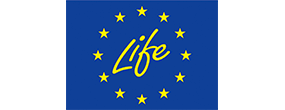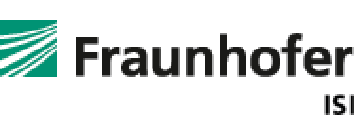Overview
Final energy consumption is decreasing since 2018 (-0.9%/year), returning below its 2000 level at around 914 Mtoe in 2022. It had risen until 2008 (+0.7%/year over 2000-2008) and declined between 2008 and 2014 because of the economic crisis (-1.4%/year). It had then rebounded until 2018 (+1.3%/year). The share of transport in final energy consumption has increased (from 28% in 2000 to 31% in 2022), as has the share of services (from 12% to 14%). In contrast, the share of industry has decreased by over 4 percentage points, from 28% in 2000 to 24% in 2022. The share of households is fairly stable (27%), as is that of agriculture (3%).
Figure 1: Final energy consumption by sector (with climatic corrections)
Source: ODYSSEEEnergy efficiency of final consumers, as measured by ODEX indicator, improved by 1.1%/year between 2000 and 2022, i.e. by 21% over the period. Larger gains have been achieved for households (1.5%/year) with a net slowdown since 2015 (0.9%/year against 1.8%/year before). The rate of energy efficiency improvement has almost halved in industry since the economic crisis (0.9%/year since 2007 compared to 1.6%/year over 2007-2019), but tends to accelerate again since 2019 (1.8%/year). The transport sector has progressed by 14% since 2000, i.e. 0.7%/year. The services sector has achieved the least progress: only 12% over 2000 - 2022, i.e. 0.6%/year.
Figure 2: Technical Energy Efficiency Index
Source: ODYSSEEEnergy efficiency is a key pillar within the EU's long-term strategy to achieve climate neutrality by 2050 and for the achievement of the medium-term objective of a minimum 55% reduction in greenhouse gas emissions by 2030, as also required under the European Climate Law from 2021. Consequently, the revision of the Energy Efficiency Directive (EED) is also part of the "Fit for 55" package under the European Green Deal, aiming at delivering additional GHG emissions reductions by revising the key EU energy legislation. Besides the EED recast (DIRECTIVE (EU) 2023/1791 of 13 September 2023), most of the Commission proposals for the revision of energy legislation have been adopted as of February 2024 (as e.g. the reform of the EU-ETS, the new ETS for building and road transport fuels, the Social Climate Fund, the Effort Sharing Regulation, the CO2 emissions standards for cars and vans or the Renewable Energy Directive).
Table 1: Sample of cross-cutting measures
| Measures | NECP measures | Description | Expected savings, impact evaluation | More information available |
|---|---|---|---|---|
| Energy Efficiency Directive (EED) - 2023 recast | No | The new amending Directive on Energy Efficiency (EU 2023/1791) entered into force in October 2023. Key elements of the EED recast are the newly introduced Art. 3 on the Energy Efficiency First principle, a binding 2030 EU energy savings target with indicative national contributions (Art. 4) and several changes to the EED energy savings obligations (Art. 8-10 and Annex V), esp. an increase in the required rate of annual energy savings, the progressive exclusion of energy savings from fossil fuel combustion technologies and the reinforcement of energy poverty alleviation provisions. | The 2023 revised directive raises the EU energy efficiency target, making it binding for EU countries to collectively ensure an additional 11.7% reduction in energy consumption by 2030, compared to the 2020 reference scenario projections. As a result, overall EU energy consumption by 2030 should not exceed 992.5 million tonnes of oil equivalent (Mtoe) for primary energy and 763 Mtoe for final energy. | Link |
| "Fit for 55" package | No | Under the European Climate Law, the EU committed to reduce its net greenhouse gas emissions by at least 55% by 2030. The ‘Fit for 55’ package of legislation includes the revision of key Directives in all sectors in order to meet this enhanced target. As of February 2024, most of the revised Directives are already adopted. | Link |
Buildings
Heating is by far the largest end-use for households (63% in 2022). The heating consumption of households per m² has decreased by 1.4%/year over 2000-2022 thanks to the tightening of building codes, coupled with financial incentives to promote thermal retrofitting of existing dwellings and the adoption of more efficient heating systems. Most of the reduction took place before 2014, as this specific consumption has remained fairly stable since then. Data shown in Figure 3 include the ambient heat of heat pumps which affects the real variation of the heating consumption per m²; excluding the ambient heat, the reduction would have been much higher (by 0.3 points or 1.7%/year). The energy consumption per dwelling decreased less than the consumption per m² (by 0.8%/year and 1.2%/year respectively) due to an increase in the average dwelling size (+0.3%/year since 2000). The shares of cooking and water heating are decreasing while electrical appliances account for a larger share (14% in 2022, + 3 points since 2000); the share of air conditioning (AC) remains marginal.
Figure 3: Energy consumption of household space heating per m² (with climatic corrections)
Source: ODYSSEE; ambient heat included.Figure 4: Energy consumption per dwelling by end-use (except space heating)
Source: ODYSSEEIn 2022, energy consumption of households reached 242 Mtoe, around 2% (6 Mtoe) lower than its 2000 level. Despite a growing number of dwellings (+46 Mtoe), larger homes (+21 Mtoe), an increasing number of appliances (+15 Mtoe) and other increasing factors (mainly behavioural, +3 Mtoe), the energy consumption decreased over the period thanks to energy savings, which offset all these growth factors (-88 Mtoe). Additionally, a warmer climate in 2022 than in 2000 also contributed to this decrease. “Others” (+3 Mtoe) combine the effect of increase consumption of ambient heat (+9 Mtoe) and consumption reduction due to behavioural changes (-6 Mtoe), linked to price increases since 2021 and sufficiency.
Figure 5: Main drivers of the energy consumption variation in households
Source: ODYSSEE; ambient heat included.The energy consumption per m² has overall been decreasing since 2010 (-1.9%/year) and stands slightly below its 2000 level in 2022 (19 koe/m²). It remained stable during the period of low economic growth (2007-2010) (+0.1%/year) as the consumption decrease did not follow the activity slowdown. The electricity consumption per m² increased by 2.4%/year until 2010 and has been decreasing afterwards (-1.4%/year), down to around 113 kWh/m² in 2022.
Figure 6: Energy and electricity consumption per m² in services (with climatic corrections)
Source: ODYSSEEThe legislative framework for the European building sector is set by two key regulations. The Energy Performance of Buildings Directive (EPBD) was first introduced in 2010 (2010/31/EU), the Energy Efficiency Directive (EED) in 2012 (2012/27/EU). Both Directives were amended in 2018 (amended EPBD: 2018/844/EU; amended EED: 2018/1999/EU). Within the “Fit for 55” package, the EED was revised again in autumn 2023 (EU/2023/1791). Another amendment of the EPBD is expected for early 2024.
As part of the 2023 revisions of the ETS Directive, a new emissions trading system named ETS 2 was also created, separate from the existing EU ETS. This new system will cover and address the CO2 emissions from fuel combustion in buildings, road transport and small industry not covered by the existing EU ETS.
Table 2: Sample of policies and measures implemented in the building sector
| Measures | NECP measures | Description | Expected savings, impact evaluation | More information available |
|---|---|---|---|---|
| Amended Energy Performance of Buildings Directive (EPBD) 2018 - another amendment is expected for early 2024 | No | With the amendment of the former EPBD from 2010 in 2018, some new measures were introduced to modernise the EU's building sector and to increase the renovation rates. These measures include long-term renovation strategies to be delivered by the MS, Minimum energy Performance Standard for new and existing buildings, energy performance standards for buildings as well as the nearly zero-energy buildings (NEZEB) standard for new buildings from 31 December 2020. Another amendment is expected for early 2024. On 7 December 2023, the co-legislators reached a provisional agreement on the revision. | Reduction of annual final energy use in 2030: 28 Mtoe. Reduction of CO2 emissions: 38 Mt. Result of Impact assessment (preferred Option) | Link |
Transport
The energy consumption of transport has mainly increased until 2010. Its distribution by mode has remained almost stable since 2000, road transport accounting for around 94% (+2 points since 2000). Cars represent 54% of the sector's consumption and road freight transport (trucks and light duty vehicles) 36% in 2022.
Figure 7: Transport energy consumption by mode
Source: ODYSSEEPassenger traffic stood at almost 5000 Gpkm in 2022 (i.e. 11000 km/capita), 6% lower than its pre-pandemic level, after an increase at 0.8%/year between 2000 and 2019. The share of public transport has almost returned to its pre-pandemic level (18% in 2022). It had remained relatively stable between 2000 and 2019 (around 19%), but fell significantly in 2020 and 2021 due to the Covid pandemic (14% and 15%respectively).
Figure 8: Modal split of inland passenger traffic
Source: ODYSSEEFreight traffic has increased by 31% since 2000. Despite a decline of 2.5% in 2020, it has returned to its pre-pandemic level since 2021, reaching around 2400 Gtkm in 2022. The share of rail and water traffic (22% in 2022) has decreased at EU level (-7 points since 2000), despite the policies implemented to promote these modes.
Figure 9: Modal split of inland freight traffic
Source: ODYSSEEThe consumption of transport increased by 21 Mtoe since 2000 (+8%). The growth in passenger and freight traffic contributed to increase energy consumption by 44 Mtoe, while modal shift and other effects increased it by a further 16 Mtoe. Energy savings (i.e. efficiency improvement of cars, trucks, etc.) offset around 63% of this increase, reducing energy consumption by 38 Mtoe.
Figure 10: Main drivers of the energy consumption variation in transport
Source: ODYSSEEThe key Directives to increase energy efficiency and reducing CO2 emissions in road transport are mandatory emission reduction targets for new vehicles. For new cars, such targets have been set since 2009 (Regulation 443/2009/EC), for vans since 2011 (Regulation 510/2011/EU). From 1 January 2020, new CO2 standards are in place for new cars and vans for 2025 and 2030 (Regulation (EU) 2019/631). A further revision was adopted in April 2023 (Regulation (EU) 2023/851) which especially strengthens the emission targets applying from 2030. In 2019, CO2 emission standards have also been adopted for heavy-duty vehicles (Regulation 2019/1242/EU), setting targets for new lorries for 2025 and 2030. CO2 emissions of aviation have been included in the EU emissions trading system since 2012.
Table 3: Sample of policies and measures implemented in the transport sector
| Measures | NECP measures | Description | Expected savings, impact evaluation | More information available |
|---|---|---|---|---|
| CO2 emission performance standards for new passenger cars and for new light commercial vehicles (Regulation (EU) 2019/631 and 2023/851) | No | The Regulation sets new EU fleet-wide CO2 emission targets for the years 2025 and 2030 for newly registered passenger cars and vans. The targets are defined as a percentage reduction: for cars 15% reduction from 2025 and 37.5% from 2030; for vans 15% reduction from 2025 and 31% from 2030. | GHG emission reduction in 2030 (comp. to 2005): 23% | Link |
| CO2 emission performance standards for new heavy-duty vehicles (Regulation (EU) 2019/1242) | No | The regulation sets CO2 emission standards for heavy-duty vehicles by Setting targets for reducing the average emissions from new lorries for 2025 and 2030. The Regulation also includes a mechanism to incentivise the uptake of zero- and low-emission vehicles, in a technology-neutral way. | Annual CO2 reduction by 2030: 54 Mt. | Link |
Industry
Since 2000, energy consumption has decreased in all industrial branches, with the greatest reduction in steel industry (-34%). Chemical and non-metallic minerals industries are the main energy consuming branches (respectively 20% and 15% of total industry consumption in 2022); while the share of chemicals is increasing (+1 point since 2000), the share of non-metallic minerals is declining (-1 point).
Figure 11: Final energy consumption of industry by branch
Source: ODYSSEEThe specific consumption of steel has been almost stable since 2007, after a sharp decrease over 2000-2007 (-2%/year). The specific consumption of pulp and paper fell by 6% between 2000 and 2006 and remained almost stable since then. The specific consumption of cement fell sharply between 2000 and 2006 (-3%/year) before rebounding during the crisis then resuming its downward trend since 2014 (-1.7%/year).
Figure 12: Unit consumption of energy‐intensive products (toe/t)
Source: ODYSSEEThe industry energy consumption decreased by around 51 Mtoe between 2000 and 2022. This is mainly due to energy savings (83 Mtoe) and to a lesser extent to structural effects (22 Mtoe), i.e. the fact that less intensive branches increased their contribution in industrial value added. Growth in industrial activity (measured with the production index) had a relatively limited effect (43 Mtoe), due to the recession over 2007-2013.
Figure 13: Main drivers of the energy consumption variation in industry
Source: ODYSSEEThe key regulation for energy-intensive industries is the emissions trading system (ETS). The legislative framework for the current trading period (phase 4 from 2021-2030) was revised in 2018 and again in April 2023. Industrial cross-cutting technologies (as e.g. circulators, electric motors, computers and servers, fans) are regulated by the EU's Ecodesign Directive (2009/125/EC). A key funding programme for industry is the EU Innovation Fund for demonstration of innovative low-carbon technologies.
Table 4: Sample of policies and measures implemented in the industry sector
| Measures | NECP measures | Description | Expected savings, impact evaluation | More information available |
|---|---|---|---|---|
| EU Emission Trading System (EU ETS) | No | The "cap and trade" system covers CO2 emissions from power and heat generation, energy intensive industries as well as commercial aviation. | With the revision in 2023, the cap is tightened to bring emissions down by 62% by 2030 compared to 2005 levels. |





